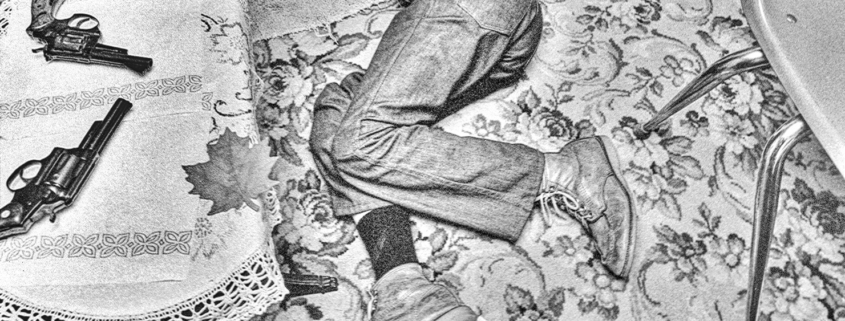Below are excerpts From Katherine Ramsland’s Writers’ Police Academy Online presentation – “Sleuthing the Clues in Staged Homicides.”
Pettler’s Staging Typology
The Cleaner: This is more alteration than staging, because this person cleans the scene to remove evidence
The Concealer: Hides or destroys items related to the incident to prevent discovery
The Creator: Adds items to the scene, or rearranges for a specific effect
The Fabricator: Relies on ability to verbally deceive as a means of deflection
The Inflictor: Might include self in incident, with self-wounding, or might claim self-defense
The Planner: spends considerable time preparing the incident to appear as something else instead of reacting, post-incident.
*Laura Pettler, PhD, CSCSA (Certified Senior Crime Scene Analyst) is the owner of Carolina Forensics, vice president of the American Investigative Society of Cold Cases, and was co-founder/director of North Carolina Prosecutorial District 20-A’s 2006-2010 Crime Scene Reconstruction and Behavioral Analysis Program, its Cold Case Task Force, and its 2009 International Forensic Institute. Pettler is a scholar-practitioner focusing on cold case homicide, crime scene staging, intimate partner homicide, and crime reconstruction. ~ bio, Evidence Technology Magazine.
Tips from The Psychology of Death Investigations, by Katherine Ramsland
Tips for Investigators to Evaluate for Staging
- Beware of personal assumptions, especially those that attract investigative shortcuts.
- Remember that the majority of stagers (except for suicides) had a relationship with the decedent.
- The relationship is most likely intimate, past or present.
- Stagers often discover the body or report the person missing.
- The reason a body discoverer is at the scene should be legitimate.
- Stagers might inject themselves into an investigation to “be helpful.”
- Stagers often “find” a suicide note or other evidence they want police to see.
- 911 calls from stagers will have unique elements common to “guilty” vs. “innocent” callers.
- Besides manipulating the scene, stagers will reinforce it with verbal manipulation.
- Their efforts to deflect might include an explanation for the incident.
- The staging will probably feature mistaken notions about how such incidents occur, such as suicide notes that have more non-genuine indicators than genuine.
- Learn the items that characterize genuine notes, rather than make assumptions.
- Look for items that copy media reports or narratives.
- Look for scene behavior uncharacteristic of decedent.
- If a suicide note mentions a close associate, consider them a person of interest.
- Stagers are most likely to be male.
- Staging a suicide most often involves firearms.
- Suspicious indicators are weapons positioned too perfectly, or positions do not match where blood spatter or shell casings are found.
- Staged scenes are most often in a place familiar to the decedent, such as their home.
- Watch for unexpected behaviors during interviews.
- Match narratives about the incident against evidence.
- Develop competing hypothesis to help highlight issues of concern.
Resources:
Ellis, T. M. (2008, July 18). CSI-like suicide ruled in death of Red Lobster exec Thomas Hickman. Dallas Morning News.
Ferguson, C. E. (2014). Staged crime scenes: Literature and types. In W. Petherick (Ed.), Serial crime: Theoretical and Practical Issues in Behavioural Profiling, 3rd ed., (pp. 141-164). Boston, MA: Andersen.
Ferguson, C. E., & Petherick, W. (2016). Getting away with murder: An examination of detected homicides stages as suicides. Homicide Studies, 20(1), 3-24.
Geberth, V. (1996). The staged crime scene. Law and Order Magazine, 44(2), 45-49.
Geberth, V. Practical Homicide Investigation. CRC Press.
Geberth, V. Sex-related Homicide and Death Investigations. CRC Press.
Greenwood, E. (2016). Playing dead: A journey through the world of death fraud. New York, NY: Simon & Schuster.
Harpster, T., & Adams, S. (2016). Analyzing 911 homicide calls: Practical aspects and applications. Boca Raton, FL: CRC Press.
Harpster, T., Adams, S., & Jarvis, J. P. (2009). Analyzing 911 homicide calls for indicators of guilt or innocence: An exploratory analysis. Homicide Studies, 13(1), 69-93.
Pettler, L. (2016). Crime Scene Staging Dynamics in Homicide Cases. Boca Raton, FL: CRC Press.
Schlesinger, L., Gardenier, A., Jarvis, J., & Sheehan-Cook, J. (2014). Crime scene staging in homicide. Journal of Police and Criminal Psychology, 29(1), 44-51.
 Katherine Ramsland teaches forensic psychology at DeSales University, where she is the Assistant Provost. She has appeared on more than 200 crime documentaries and magazine shows, is an executive producer of Murder House Flip, and has consulted for CSI, Bones, and The Alienist. The author of more than 1,000 articles and 68 books, including How to Catch a Killer, The Psychology of Death Investigations, and The Mind of a Murderer, she spent five years working with Dennis Rader on his autobiography, Confession of a Serial Killer: The Untold Story of Dennis Rader, The BTK Killer. Dr. Ramsland currently pens the “Shadow-boxing” blog at Psychology Today and teaches seminars to law enforcement.
Katherine Ramsland teaches forensic psychology at DeSales University, where she is the Assistant Provost. She has appeared on more than 200 crime documentaries and magazine shows, is an executive producer of Murder House Flip, and has consulted for CSI, Bones, and The Alienist. The author of more than 1,000 articles and 68 books, including How to Catch a Killer, The Psychology of Death Investigations, and The Mind of a Murderer, she spent five years working with Dennis Rader on his autobiography, Confession of a Serial Killer: The Untold Story of Dennis Rader, The BTK Killer. Dr. Ramsland currently pens the “Shadow-boxing” blog at Psychology Today and teaches seminars to law enforcement.


